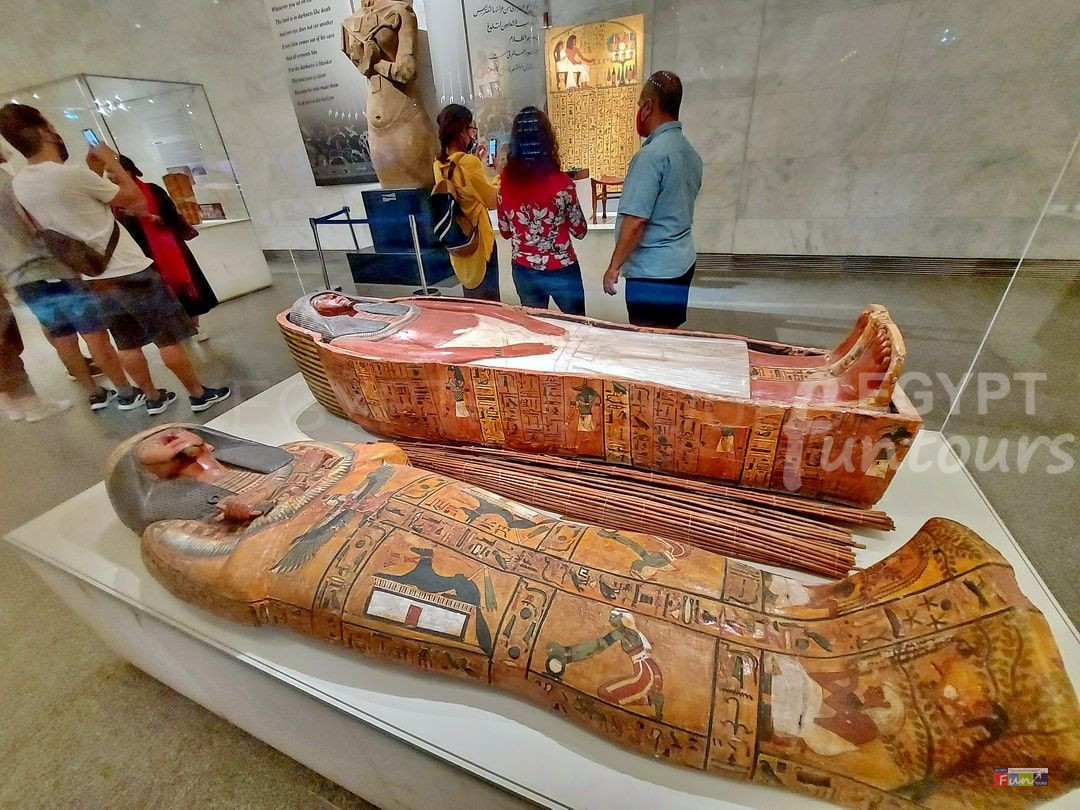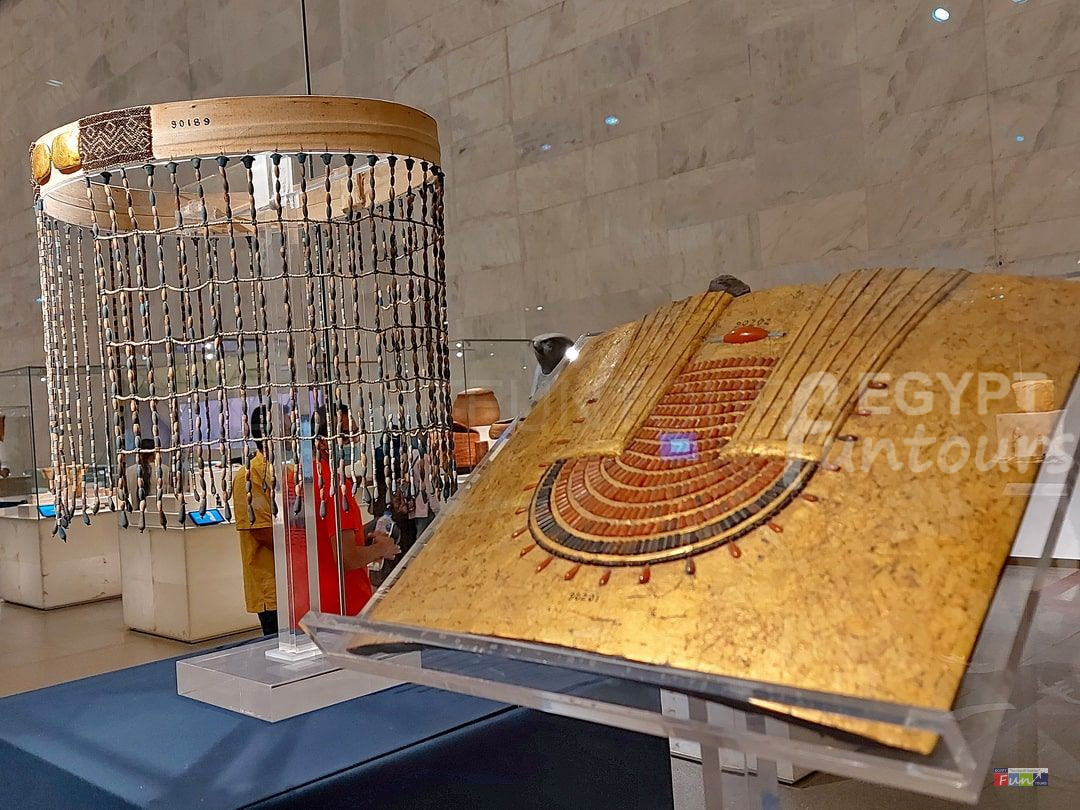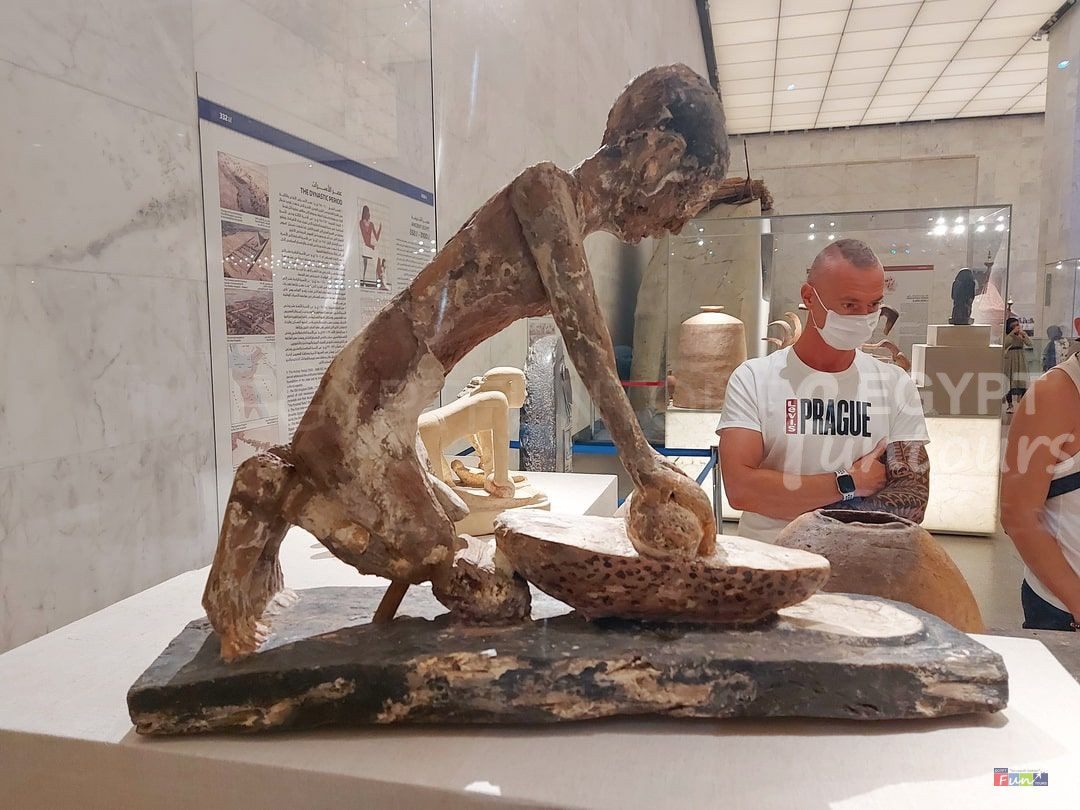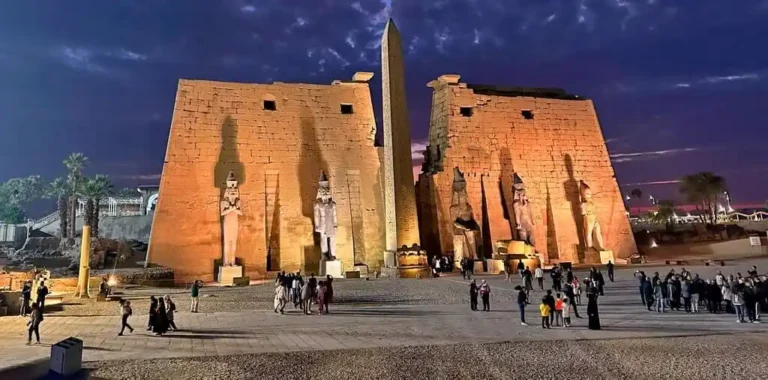What You Will See: The “Must-See” Highlights
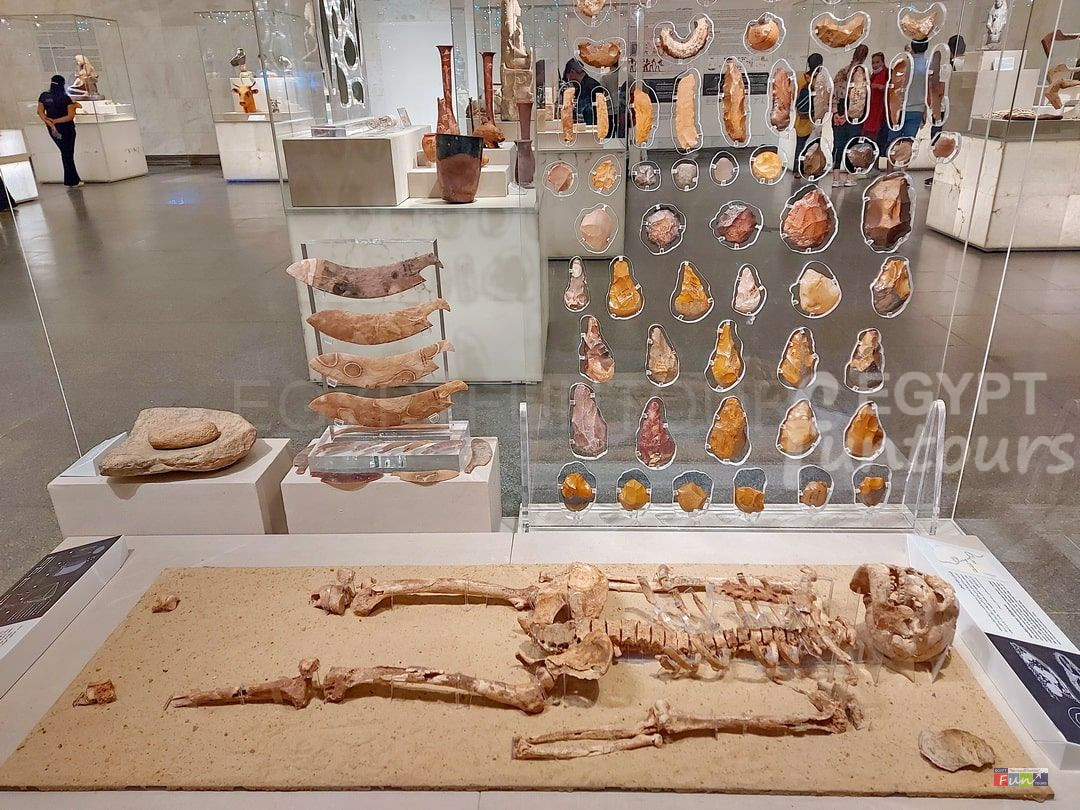
Your Egypt Fun Tours guide will lead you through the vast National Museum of Egyptian Civilization, but the experience is defined by its two main halls.
1. The Royal Mummies Hall (The “Wow” Moment)
This is the main event. After seeing the parade on TV, you can now experience it for yourself.
The Atmosphere: You’ll descend a long ramp into a subterranean, climate-controlled gallery that is designed to feel just like the Valley of the Kings. It is dark, quiet, and deeply respectful.
The “Celebrity” Pharaohs: This is not a “spooky” exhibit; it’s a “royal” one. You will walk past the individual, beautifully preserved mummies of 22 kings and queens, each one identified with a digital display and the story of their reign.
The “A-List”: You will come face-to-face with legends, including:
- Ramesses II (The Great)
- Queen Hatshepsut (The great female pharaoh)
- Seti I (Whose tomb is the most beautiful in Luxor)
- Thutmose III (Egypt’s greatest warrior pharaoh)
2. The Main Exhibition Hall (A 50,000-Item Journey)
This massive, bright hall tells the entire story of Egyptian civilization. The museum’s 50,000 artifacts are arranged in a brilliant chronological flow. You’ll walk through:
The Prehistoric Era:
Journey back to where it all began. See the sharp, stone tools of Egypt’s first inhabitants—the hunters and gatherers who lived here two million years ago. You’ll also see the oldest human skeleton ever found in Egypt, a powerful link to our deepest past.
The Predynastic Era:
See the dawn of civilization before the pharaohs. This is where Egyptians first learned to farm and settled on the Nile’s banks. Discover their early pottery, see the first mud-brick homes, and witness the very first attempts at mummification and writing.
The Dynastic (Pharaonic) Era:
This is the age of the pharaohs. See how a united Egypt was ruled by a living god-king, who was bound to uphold Maat (truth and balance). You’ll explore the art, statues, and weapons from the 30 dynasties that built the pyramids and forged an empire.
The Greco-Roman Era:
This is the “melting pot” era. After Alexander the Great conquered Egypt, Greek and Roman culture fused with pharaonic traditions. See statues of Roman emperors dressed as pharaohs, beautiful Fayoum mummy portraits, and artifacts from when Alexandria was the intellectual capital of the world.
The Coptic Era:
Discover the art and faith of Egypt’s early Christians. This story begins with the Holy Family’s flight to Egypt. You’ll see beautifully painted icons, ancient, hand-written Bibles, and intricate textiles from the world’s first Christian monasteries.
The Islamic Era:
Explore the “Golden Age” of Cairo. See treasures from the great caliphates and dynasties (Ayyubid, Mamluk, etc.) that made this city the center of the Islamic world. Don’t miss the stunning mashrabiya (woodwork), intricate scientific instruments, and a beautiful, ornate Kiswa (the sacred covering for the Kaaba in Mecca).
The Modern & Contemporary Era:
See the legacy of the 19th-century royal family (of King Farouk) and the traditions of modern Egyptian culture, from farming to music.

